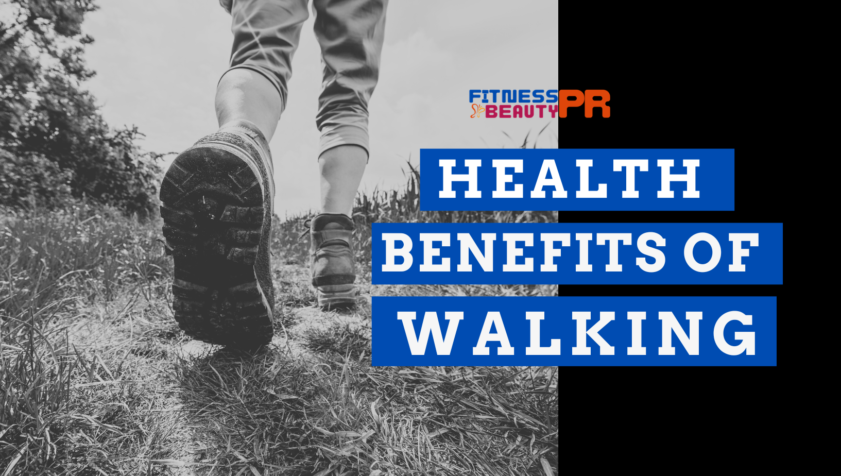Walking, a simple yet profoundly influential activity, is often underrated in its ability to transform our health and well-being. Far from being just a primary mode of transportation, walking is a cornerstone of physical and mental health. It stands out as an accessible, low-impact exercise that is universally available and requires no special equipment or training. Here, we get into the fascinating science behind walking, exploring how this fundamental activity can bring about substantial changes in our body and mind. By understanding the myriad of health benefits of walking, we can fully appreciate the power of this everyday habit and its role in enhancing our overall health and quality of life. Let’s get into the true impact of walking and how integrating it into our daily routine can lead to significant improvements in our health.
The Science Behind Walking
Walking is far more than a fundamental physical activity; it’s a catalyst for extensive physiological changes that significantly benefit our health. As a form of exercise, walking boosts cardiovascular health by increasing heart rate and improving blood circulation, thereby reducing the risks of heart disease and stroke. It also positively affects metabolism, aiding in blood sugar regulation and fat burning, which is crucial for weight management and diabetes control. Additionally, as a weight-bearing exercise, walking strengthens bones and muscles, enhancing bone density and reducing the risk of osteoporosis while also improving muscle strength and joint health.
Walking provides substantial neurological benefits, such as increasing blood flow to the brain, enhancing cognitive functions, and releasing endorphins that elevate mood and combat stress and anxiety. It also improves respiratory function by increasing lung capacity and efficiency, which is vital for overall endurance. Walking helps in balancing various hormones, including insulin and cortisol, and boosts the immune system, enhancing the body’s ability to ward off infections. Significantly, it also stimulates the lymphatic system, which doesn’t have a pump like the heart, aiding in the transport of lymph fluids throughout the body. Thus, integrating walking into your daily routine is a decisive step towards achieving a healthier, more balanced lifestyle.

Health Benefits of Walking
Benefits of Walking: Weight Management
Walking is an accessible way to manage weight. We’ll discuss how it helps in weight loss and maintenance and share tips to optimize your walking routine for effective weight management.
Walking burns calories, which is fundamental to weight loss. The number of calories burned depends on walking speed, distance covered, and the individual’s weight. For example, a brisk walk can burn between 90-200 calories in 30 minutes, depending on these factors. This calorie expenditure contributes to a calorie deficit, which is necessary for weight loss.
Benefits of Walking: Cardiovascular Health
Regular walking is a highly effective measure for reducing the risk of heart disease. It positively impacts heart health by improving circulation, lowering blood pressure, reducing bad cholesterol (LDL), and aiding in weight management. Walking also helps stabilize blood sugar levels, thereby diminishing the risk of type 2 diabetes, a condition closely linked to heart disease. For optimal heart health, aim for at least 150 minutes of moderate-intensity walking per week, as per guidelines by health authorities like the American Heart Association. This translates to about 30 minutes a day, five days a week, at a brisk pace where you can talk but not sing, roughly 3 to 4 miles per hour. Regularity in walking is crucial, and incorporating intervals of faster walking or inclines can further boost cardiovascular benefits. Monitoring your heart rate ensures that you maintain an effective intensity for heart health without overexertion. By adhering to these guidelines and making walking a consistent part of your routine, you can significantly enhance the health of your heart and overall well-being.
Benefits of Walking: Lowering Blood Pressure
Walking is an effective, natural method for managing high blood pressure, a key risk factor for heart disease and stroke. Regular walking enhances blood vessel flexibility, allowing for improved blood flow and reduced arterial pressure. Additionally, it plays a role in stress reduction, releasing endorphins that help calm the mind and body. This, coupled with its benefits in weight management and heart health, makes walking a powerful tool in blood pressure control. To integrate walking into a blood pressure management plan, aim for at least 30 minutes of moderate-intensity walking most days, starting slowly and increasing the duration as fitness improves. Ensure the intensity is manageable by using the ‘talk test’ – being able to converse comfortably while walking. Additionally, combine walking with other healthy habits like a balanced diet and reduced sodium intake. Tracking both walking routines and blood pressure readings can help in monitoring progress and making necessary adjustments. This consistent and regular approach to walking not only contributes to controlling high blood pressure but also enhances overall health and well-being.
Benefits of Walking: Mental Well-being
Walking profoundly impacts mental well-being, especially in reducing stress and anxiety. This natural mood enhancer stimulates the release of endorphins, creating a sense of calm and relaxation while lowering stress hormones like cortisol. To maximize mental relaxation, mindful walking techniques can be employed. This includes focusing on sensory experiences during the walk, such as the sights, sounds, and smells, which helps in grounding oneself in the present moment. Integrating rhythmic breathing with steps can also have a meditative effect, enhancing mental clarity and relaxation. Setting intentional goals for each walk, such as seeking clarity on an issue or simply achieving a state of calm, adds purpose and depth to the experience. Walking in natural environments like parks or trails can further amplify stress reduction and mood enhancement. Additionally, maintaining a good posture and being aware of one’s gait can improve self-esteem and overall mood.
Regular walking not only offers immediate stress relief but also contributes to long-term mental health benefits. Regular walkers often report better sleep patterns, crucial for mental health, along with enhanced cognitive functions and a lower risk of developing conditions like depression and anxiety. By transforming a simple walk into a mindful practice, one can significantly boost mental well-being, making walking a powerful and accessible tool for maintaining mental health.
Benefits of Walking: Improved Sleep
Regular walking can significantly improve sleep quality by regulating the body’s natural sleep-wake cycle. Engaging in a consistent walking routine, especially during daylight hours, helps synchronize our internal clock, leading to a more regular sleep pattern. The physical exertion from walking also promotes faster sleep onset and deeper sleep phases. For enhanced sleep quality, incorporate a daily walk into your schedule, preferably in the morning or early evening to avoid overstimulation before bedtime. Aim for a moderate pace to ensure adequate physical exertion without causing excessive tiredness. Additionally, a post-dinner walk can aid digestion and help relax the body, preparing it for restful sleep. By maintaining this routine, walking can serve as a natural and effective way to improve overall sleep quality and contribute to better health and well-being.
Benefits of Walking: Longevity
Regular walking has a remarkable impact on cellular aging, playing a pivotal role in promoting longevity. This physical activity helps slow down the aging process at the cellular level by maintaining the length of telomeres’ protective caps at the ends of chromosomes that tend to shorten with age. Walking boosts the production of telomerase, an enzyme that helps repair and lengthen telomeres, thereby slowing cellular aging.
Walking enhances overall physiological functions, from improving heart health to boosting immune response, which collectively contributes to a longer and healthier lifespan. Consistency in walking habits is crucial; regular, moderate-paced walking can lead to substantial long-term health benefits, including reduced risks of chronic diseases and age-related conditions. By integrating walking into daily life, individuals can tap into this accessible fountain of youth, paving the way for a longer, more vibrant life.
Benefits of Walking: Muscle Building
Walking, while primarily known for its cardiovascular benefits, also plays a significant role in muscle development, particularly in maintaining and toning muscles. As a weight-bearing exercise, walking engages and strengthens the lower body muscles, including the quadriceps, hamstrings, glutes, and calf muscles. Regular walking, especially at a brisk pace or on varying inclines, can enhance muscle endurance and tone. The repetitive motion of walking causes muscle contraction and relaxation, which, over time, leads to muscle strengthening and toning.
Walking helps improve muscle coordination and balance, which are vital for overall muscular health. While it may not lead to significant muscle mass increase like weightlifting, walking is an effective way to maintain muscle health, keep the muscles toned, and prevent muscle loss, especially as one age. For those seeking to enhance muscle toning through walking, incorporating varied terrains, such as hills or stairs, and focusing on a brisk pace can further engage the muscles, leading to better muscle definition and endurance.

Walking for Specific Age Groups
The Benefits of Walking for Children and Adolescents
Walking provides numerous benefits for the younger population, not only enhancing their physical health by building strong bones and muscles, improving cardiovascular fitness, and aiding in weight management but also boosting their mental well-being. Regular walking can improve mood, reduce anxiety, and enhance cognitive functions such as concentration and memory. It’s also an excellent way for children to engage with their surroundings, fostering exploration and curiosity. To promote active walking habits in children and adolescents, it’s crucial to integrate walking into their daily routines. This can be achieved by making walking a family activity, creating fun walking adventures, encouraging walking with friends, and participating in challenges that make walking exciting and goal-oriented. Integrating technology, such as fitness trackers, can appeal to the tech-savvy younger generation while ensuring safety and teaching road safety rules is paramount. Encouraging walks in nature can deepen their connection to the environment and enhance their mental health benefits. Making walking an enjoyable and regular part of their lives helps inculcate a foundation for lifelong health and wellness, setting them on a path to a healthy, active lifestyle.
The Benefits of Walking for Seniors
Tailoring walking routines for seniors is crucial for addressing their specific health needs, ensuring safety, and maximizing the benefits of this low-impact exercise. As seniors vary in physical capabilities and health concerns, it’s essential to start slowly, especially for those new to exercise or returning after a break, and gradually increase the duration and intensity of walks. Walking routines should focus on balance and strength, incorporating paths that are safe yet gently challenging, like walking on grass or uneven surfaces. Monitoring the intensity to avoid overexertion is key, aiming for a moderate pace where conversation is possible but singing is not. Including regular rest breaks during walks is essential for preventing fatigue, and choosing safe, well-lit environments with minimal obstacles helps reduce the risk of falls. Staying hydrated is particularly important for older adults, who may only sometimes recognize their thirst.
Social aspects of walking, such as group walks or companionship, add enjoyment and a sense of safety. It’s also vital for seniors to consult healthcare providers to consider any specific health conditions, like arthritis or heart disease when planning their walking routines. By carefully adapting walking activities to their unique needs, seniors can enjoy improved physical health, mental well-being, and social interaction, contributing significantly to their overall quality of life and independence.
Tips for an Effective Walking Routine
Setting Goals
Setting realistic goals is a fundamental step in establishing a successful walking routine. Begin by setting achievable targets, like walking for 15-20 minutes a day, and gradually increase your efforts based on your fitness level. Goals should be specific, measurable, and tailored to individual capabilities, such as aiming to walk a certain distance or incorporating varied terrains into your routine. To track progress, using a walking journal or app can be effective, allowing you to record and reflect on your walking duration, distance, and personal experiences. Celebrating small milestones and adjusting goals as needed helps maintain motivation and a sense of achievement.
Staying motivated is vital to sustaining a walking habit. Walking with a buddy or joining a group can provide both motivation and accountability while participating in walking challenges adds a fun, competitive edge. Setting up a personal reward system for meeting goals can also be motivating. Variety in walking routines, like changing routes or listening to music or podcasts, keeps the experience fresh and engaging. Above all, focusing on the myriad health benefits of walking, such as improved fitness, weight management, and enhanced mental health, can be a powerful motivator. By combining these strategies of goal setting, progress tracking, and staying motivated, walking can become a rewarding and integral part of daily life, contributing significantly to overall health and wellness.
Proper Walking Techniques
Maintaining correct posture and utilizing proper techniques while walking are crucial for maximizing the benefits and preventing injuries. It’s essential to keep your head up with your neck aligned with your spine and eyes forward to avoid neck strain. Shoulders should be relaxed and slightly back to prevent rounding and tension. Engaging your core stabilizes the entire body and reduces the risk of lower back pain. Arms should be bent at about a 90-degree angle, swinging naturally with the stride of the opposite leg, aiding in balance and reducing lower body strain. Hip alignment is also vital; they should be level and facing forward to maintain proper leg alignment and balance. Foot strikes should start at the heel, rolling through to the toes, which helps in absorbing impact. Stride length should be comfortable to avoid overstriding, which can lead to joint stress.
Wearing proper footwear is essential, as supportive and cushioned walking shoes prevent foot, ankle, and knee injuries. Incorporating a warm-up and cool-down routine, including stretches, prepares the muscles for activity and reduces post-walk stiffness. Taking regular breaks during longer walks can prevent overexertion and injuries. Most importantly, listening to your body and adjusting your technique as needed is crucial. If you experience discomfort or pain, it’s essential to address it promptly and seek professional advice if it persists. Following these guidelines ensures a safer and more enjoyable walking experience, enhancing the overall benefits of your walking routine.
Incorporating Walking Into Daily Life
Walking as Commute
Incorporating walking into daily life as a commute presents a practical and beneficial strategy for enhancing physical activity while also contributing positively to the environment and personal finances. For those living relatively close to their workplace or school, choosing to walk rather than drive can significantly increase daily physical activity, contributing to improved cardiovascular health, weight management, and mental well-being. Even for longer distances, combining walking with public transport can be effective; consider walking to a bus stop or train station instead of driving. This approach not only increases physical activity but also reduces reliance on cars, contributing to lower greenhouse gas emissions and less traffic congestion.
Economically, walking as a commute can lead to substantial savings on fuel costs and parking fees. It also reduces the wear and tear on vehicles, potentially lowering maintenance and repair expenses. In urban areas, where parking is often limited and expensive, walking can be a particularly attractive option. Additionally, walking provides a time for relaxation and mental preparation at the start and end of the workday, offering a stress-free alternative to the often hectic experience of driving in traffic. By integrating walking into daily commutes, individuals can enjoy a range of health, environmental, and economic benefits, making it a smart and sustainable choice for everyday travel.
Social Walking
Social walking, or walking in groups, offers a unique blend of health benefits and community building. One of the primary advantages of group walking is the motivation and accountability it provides. Walking with others can turn exercise into a more enjoyable and less daunting experience, encouraging regular participation and fostering a consistent habit. The social interaction involved in walking with friends, family, or walking clubs creates a supportive environment that can significantly enhance mental well-being. It provides an opportunity for socializing, sharing experiences, and creating bonds, which is especially beneficial for combating feelings of isolation or loneliness.
Group walking can lead to the formation of a community centered around the shared goal of health and wellness. This community can become a platform for exchanging health tips, encouraging healthy lifestyles, and organizing community events focused on fitness and well-being. In addition to the physical health benefits of walking, such as improved cardiovascular health and weight management, social walking amplifies mental health benefits by fostering a sense of belonging and community. For those who may find it challenging to stay motivated or enjoy solo exercises, social walking offers an attractive alternative, combining the physical benefits of walking with the emotional and psychological benefits of community engagement.
FAQs
What are the health benefits of walking?
Walking is a holistic exercise offering extensive health benefits. It aids in managing and reducing weight by burning calories and boosting metabolic rate. Regular walking significantly improves cardiovascular health, helping to reduce the risk of heart disease and stroke. It’s also effective in lowering high blood pressure and improving mental health by reducing stress, anxiety, and symptoms of depression. Walking enhances sleep quality and contributes to longer life by slowing down cellular aging. For muscle health, it helps in toning and maintaining muscle strength.
Can walking help with weight loss?
Yes, walking can be an effective way to lose weight. It burns calories, which is crucial for creating a calorie deficit needed for weight loss. Moreover, it improves your metabolism, meaning your body burns calories more efficiently, even at rest. Integrating walking into a daily routine, alongside a healthy diet, can lead to significant and sustainable weight loss.
Is walking better than running for fitness?
While both walking and running have their advantages, walking is a low-impact exercise that’s gentler on the joints and suitable for all fitness levels. It’s an excellent choice for maintaining fitness, particularly for those who may find running too intense or have joint concerns. Walking consistently can offer similar fitness benefits to running, including improved heart health and endurance, without the higher impact on the body.
How does daily walking improve overall health?
Incorporating daily walking into your routine can have a profound impact on overall health. It boosts cardiovascular functioning, enhances immune system response, increases lung capacity, and improves blood circulation. These combined effects contribute to a more substantial, healthier body and reduce the risk of many chronic diseases.
What are the mental health benefits of walking?
Walking has significant benefits for mental health. Regular walking reduces stress, anxiety, and depression symptoms. Physical activity stimulates the release of endorphins, which are mood-enhancing hormones, leading to improved mood and increased feelings of happiness. Walking, especially in natural settings, can provide a therapeutic effect, offering a sense of peace and mindfulness.
How does walking benefit the body?
Walking is a comprehensive exercise that benefits the body in numerous ways. It strengthens the heart and muscles, improves endurance and joint mobility, and aids in maintaining a healthy weight. Regular walking also contributes to the prevention of various chronic diseases, such as type 2 diabetes, heart disease, and certain types of cancer.
Can walking improve heart health?
Walking is absolutely highly beneficial for heart health. It increases the heart rate, which strengthens the heart muscle and improves overall cardiovascular endurance. Regular walking also helps in lowering harmful cholesterol levels and maintaining healthy blood pressure, both of which are critical for heart health.
Does walking help reduce stress?
Absolutely, walking is a natural stress reliever. The physical activity of walking stimulates the release of endorphins, which are natural mood lifters. Walking also provides a break from the stressors of daily life, offering a chance for contemplation and relaxation, which contributes to reduced stress levels.
How many steps should I walk daily for health?
While the typical recommendation is to aim for 10,000 steps per day, any amount of walking is beneficial for health. Even a smaller number of steps daily can contribute to physical and mental health improvements. The key is consistency and gradually increasing your step count over time.
Is brisk walking more effective for weight loss?
Brisk walking increases your heart rate more than a leisurely pace, leading to more calories burned and a more significant contribution to weight loss. Incorporating intervals of brisk walking into your routine can enhance the calorie-burning effect, making your walks more effective for weight loss.
What are the walking techniques for better results?
To get the most out of your walking routine, maintain a proper posture with your head up, shoulders relaxed, and back straight. Swing your arms naturally and opt for moderate to brisk strides, which help burn more calories and strengthen your muscles.
What is the best time to walk for maximum benefits?
While walking is beneficial at any time, morning walks can be particularly effective. They jumpstart your metabolism and provide an energy boost for the day. However, the best time for walking is the time that fits your schedule consistently.
Which is best for cardiovascular health, walking or jogging?
Both walking and jogging are excellent for cardiovascular health. The choice between them depends on your fitness level, joint health, and preference. Walking is gentler on the joints and suitable for all ages and fitness levels, while jogging is more intense and burns calories at a higher rate.
Any walking and diet tips for weight management?
For effective weight management, combine regular walking with a balanced diet. Focus on a diet rich in fruits, vegetables, lean proteins, and whole grains. This combination of healthy eating and physical activity is critical to maintaining a healthy weight.
How can I incorporate walking into a busy schedule?
To fit walking into a busy schedule, consider short walks during breaks, opting for walking meetings, or incorporating part of your commute as a walk. These small changes can add up to significant health benefits without requiring large chunks of time.
Is walking in nature more beneficial?
Walking in natural settings, like parks or trails, can provide additional mental health benefits compared to urban walking. The natural environment reduces stress and improves mood more effectively, offering a calming and rejuvenating experience.
Walking vs. cycling for overall fitness.
Both walking and cycling offer great fitness benefits. Walking is more accessible and requires no special equipment, making it easier to start. Cycling, on the other hand, is better for training cardiovascular endurance and leg strength. Your choice depends on personal preference, fitness goals, and joint health.
The Transformative Power of Walking
Walking is a simple yet powerful tool with vast health benefits. From improving cardiovascular health to aiding in weight management and enhancing mental well-being, walking is an accessible way to boost overall health. We encourage you to embrace walking as a lifelong habit, integrating it into your daily routine in ways that work best for you. Remember, every step counts towards a healthier, happier you.
Build Your Home Gym With These Essentials
-
Apple iPad (9th Generation)
$329.00Original price was: $329.00.$249.00Current price is: $249.00. -
Samsung Galaxy Tab S7+
$849.99Original price was: $849.99.$499.99Current price is: $499.99. -
Microsoft Surface Pro 7
$680.99 -
SUUNTO 5 Peak GPS Sports Watch
$199.00 -
BODY-SOLID Multi-Station Home Gym
$5,495.00Original price was: $5,495.00.$4,395.00Current price is: $4,395.00. -
Echelon Fitness Smart Treadmill
$1,299.99 -
Echelon EX-3 Smart Bike
$472.80 -
SMARTRAVEL Electric Bike
$1,699.99 -
Dynapro Exercise Ball
$27.99 -
Ultimate Ears WONDERBOOM 3
$99.99Original price was: $99.99.$79.99Current price is: $79.99. -
Bose SoundLink Bluetooth Speaker
$149.00





















